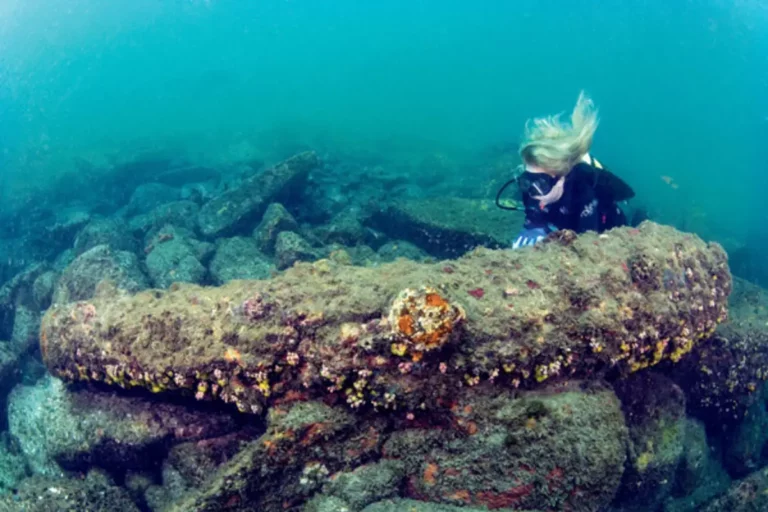The Vanishing Dutchman mystery… solved
Last October, DIVER published the story of a mysterious 18th-century shipwreck found off the coast of Sierra Leone in west Africa. An international team of divers spent weeks on site trying to establish the wreck’s identity, but without success.
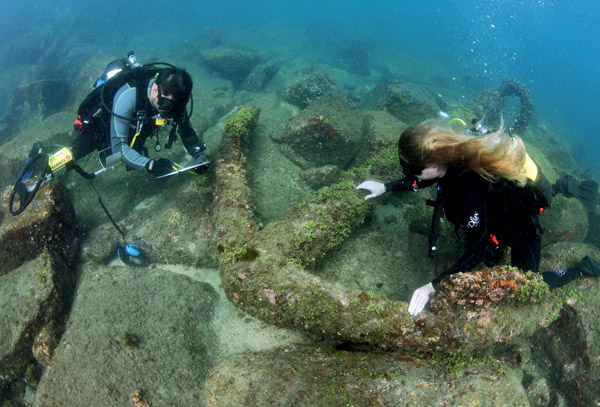
LEIGH BISHOP, who was with the team and wrote the story, is back to explain how DIVER played a pivotal role in identifying the ship.
DIGGING HARD IN THE SAND in 10m depth, our team of “Vanishing Dutchman” project divers had found enough clues to suggest that the wreck we had discovered off the Banana Islands, Sierra Leone was that of a Dutch East Indiaman – perhaps from around 1730.
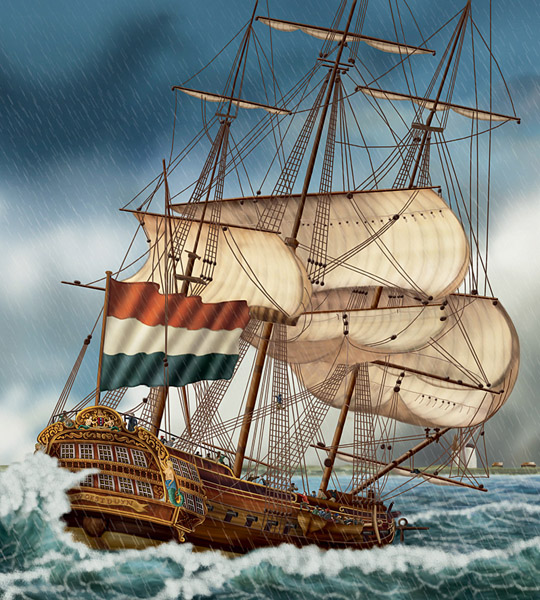
But what was it, and where had it come from? How had it met its fate on the reef? This had been a slave-trading area and surely it had to be a slave-ship, yet no shackles had been discovered. Could it have been a trader?
It seemed likely that the wreck was a lost VOC (Dutch East India Company) vessel. We noted fixtures common to finds on other VOC wrecks discovered off England, Scotland and Australia.
Samples of wood analyzed by experts suggested that at some stage the ship had been involved in a fire. Ceramics experts identified the discovered porcelain as that of the Kang Shi dynasty, dating from 1725 -1750.
Normally an archaeological project of this nature would involve many return dives for extensive study of the site but, sadly, soon after we left Africa the deadly Ebola virus broke out, and Sierra Leone was on high alert.
The main carriers of the virus are bats, and the Banana Islands are home to millions of fruit bats that fly to and feed on the mainland by night. Non-essential travel to the country was no longer an option.
Our fieldwork had however provided a foundation on which to build some serious detective work. We began researching all known 17th and 18th-century Dutch-Asiatic shipping lost on homeward voyages between the Cape and the Netherlands, especially between 1700 and 1779.
The list was narrowed down to seven candidates, two of which stood out – the ‘s Graveland and the Abbekerk. By August 2014, we were pretty sure that one of these vessels was our shipwreck.
For Polish expedition leader Peter Wytykowski and myself, this seemed to be the end of the trail, and we were 99% happy.
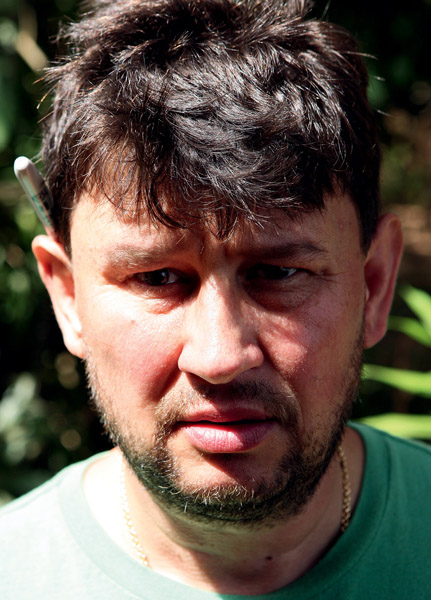
The fact that Sierra Leone doesn’t crop up often on the diving radar encouraged DIVER Editor Steve Weinman to publish the story, and Mystery of the Vanishing Dutchman appeared in the magazine last October.
WHAT HAPPENED NEXT would trigger a roller-coaster ride into what to me was still the unfamiliar world of historic shipwreck research.
An enthusiastic Dutch diver called Fred Groen read the article and showed it to his friend Arthur Scheijde, who wrote to DIVER to say that he had information that the ‘s Graveland had carried a consignment of gold. Would Leigh Bishop be interested to hear more?
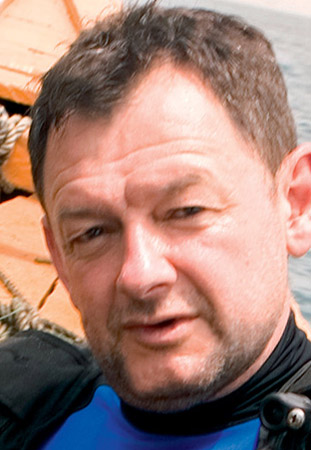
Er, yes he would. Scheijde and I embarked on some serious correspondence, and it was soon clear that this researcher had a serious degree of knowledge of the subject.
His information, from the National Archives in The Hague, suggested that the ’s Graveland was one of five ships carrying more than 13 tons of gold between them on their final voyages.
However, after turning up evidence that the ship had sunk in the Bay of Biscay, we turned to the Abbekerk again.
We discovered that there were two VOC ships of that name, one apparently lost in 1742 between the English Channel and Flanders, and another built after that year.
Returning to our original list of lost ships, Scheijde suggested we look at the Diemermeer, wrecked somewhere off Guinea in 1747.
We had ruled this VOC ship out earlier because “our wreck” had been lost off Sierra Leone, but Scheijde pointed out that in the 18th century Guinea had been the name used for a much bigger part of West Africa than it represents today.
From our fieldwork, we had concluded that the ship’s cannons were manufactured for the Amsterdam chamber of the VOC, and the Diemermeer was from Amsterdam.
It was then that we discovered hidden in a document the following: “The Dutch ship Diemermeer, returning from Ceylon [now Sri Lanka] without a Cape call, was becalmed off the Guinea coast in 1747, losing all but nine of her crew. Her hempen cable eventually parted and she ran on shore where she was pillaged and burnt by villagers. There were only two survivors.”
We had found an anchor very close to shore, and we knew that at some stage there had been an intense fire on board. Diemermeer was becoming a strong candidate for our mystery shipwreck.
THEN SCHEIJDE FOUND a newspaper report from July 1748 that not only mentioned the fire in more detail but also cited the Banana islands!
It was time to find out who the two survivors had been and exactly what had happened there 268 years ago.
Research at the National Royal Library in The Hague plus other sources dating from 1748 turned our questions into answers.
The 41m, 850-ton Diemermeer was built in 1736 for the VOC and traded between the Dutch colonial territories and her homeland from 1737 to 1747.
A heavily armed ship, she was manned by 180-275 crew, depending on her direction of sail. She was wrecked off “the coast of Guinea”, part of which is now Sierra Leone.
More information was then uncovered. A ship named Unicorn captained by Klaes Pietersz had returned from the Guinea coast in June 1748 bringing news of the fate of the ship Diemermeer, captained by Christoffel Boort, the previous August.
It seemed that she had travelled for seven months from Sri Lanka and that all the crew except the captain and nine navigators were dead. The 10 men, all sick, had landed off the Banana Islands and dropped anchor close to shore.
Rescue shots were fired (presumably from unloaded cannon) for three days straight. As no one came the men cut the anchor rope and left the ship to drift towards land. Eight are thought to have gone ashore into the jungle to seek help.
At some stage, according to the report, “several hundred negroes” appeared from the jungle, rushed to the ship, plundered everything they could carry off and then set fire to her.
We also learned that another ship captained by a man named Jonas Rust had rescued two men from the Diemermeer. These two, who we take it had remained aboard to guard the ship, had been unaware of the others’ fate. We could only assume that they had not survived.
We discovered that Captain Rust was a slave-trader and his vessel was the Blessed Sugarcane, but little else is known about him. What was clear was that on Christmas Day 1747 he had met Captain Pietersz of the Unicorn and told him the story.
Rust, having coasted the area for several months, may well have then gone off to deliver his slaves to America and taken the two rescued men as crew.
Key for us in the 1748 news report was the use of the old Dutch word for bananas, Banannis, coinciding with the location of our wreck. As the Diemermeer had sailed in from the south, the south-western point, where we had found the wreck, would have been her most likely landing place.
Peter Wytykowski still had slight doubts, because the porcelain we had found had been identified as Batavia style of the Kang Shi dynasty, which would mean it came from Indonesia rather than Ceylon.
If we could prove that the Diemermeer had been in Batavia (today Jakarta) we could be sure that this was our ship.
SO WE TURNED TO a 30-page document from the Sri Lanka National Archives dated 1 May, 1746, written just before the ship's final voyage. It specified consignments of medicine sent to Batavia by various ships, and we read that Diemermeer had carried two chests of medicines from Ceylon to Batavia.
So our ship had been in Batavia on its last voyage and, as we know, loaded a quantity of porcelain into her holds.
All we had to do now was build a picture of what our ship looked like, piece together her final ill-fated voyage, and crack open the champagne!
With the help of the Dutch National Archives’ Ton van Velzen, a retired gentleman who led the project to digitise VOC records and create a database of those who served on all VOC ships, Scheijde managed to put together a list of all those aboard the Diemermeer for that final voyage.
Remarkably, the database even told us who these people were, and their roles aboard the vessel.
Questions remained, however, such as what had happened to the men who went ashore, and the captain. Delving deeply into slave-trading history, we came across Journal of a Slave-Dealer, written by Nicholas Owen in 1746 and sold at Christies for £14,000.
Owen had sailed aboard an English slave-ship that had anchored at the Banana Islands in 1750. Going ashore, the traders had been captured by the natives and stripped and chained while their ship was plundered.
They were told that this was an act of revenge for what a Dutch captain had done in recent times. It seems that somewhere on the island the Diemermeer crew had built a fort to protect themselves, and Captain Boort had kidnapped three native children.
A second source we discovered confirmed this and referred to his captives as being ill-treated, though we don’t yet know why. But we do know that after some days Owen and his men were freed, and their lives spared on the grounds that they were not Dutch.
WHAT HAPPENED NEXT was remarkable. In the National Library of Australia we discovered the original ship’s navigational map, made by Isaak de Graaff in 1735.
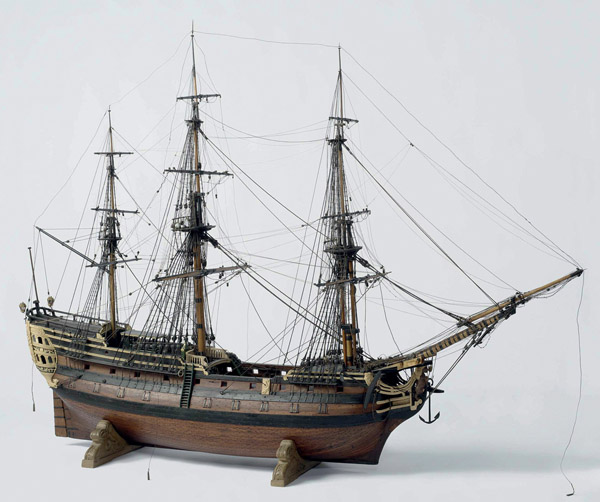
The Diemermeer took it on board in 1745, and from the course and remarks plotted either by the navigator or the captain we know exactly where the ship made passage in her last two years. We may even have seen the captain’s own handwriting.
VOC manuscript maps are very rare. Hand-drawn, they were usually destroyed when new maps were made. Only about a dozen are known to exist, and those with a ship's route drawn on them are rarer still.
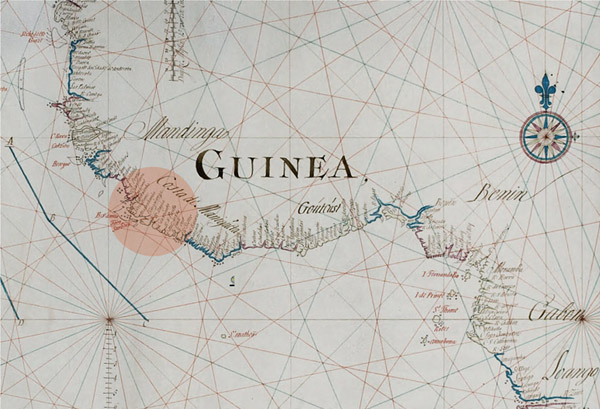
One carrying the final route of the very ship researchers are investigating was described to us as “exceptional and priceless”.
An expert at the library examined the dates and information and confirmed this as the final outbound and return passage of the Diemermeer, a voyage that began in July 1744 and ended in August 1747.
Digital enhancement of the faded areas of the map shows the outbound passage around the Cape of Good Hope into the Indian Ocean, following the south-west Indian ridge and directly across towards Amsterdam Island.
From there the ship sailed north to Ceylon, then west to Java – further proof that the ship went to Indonesia. We know she stayed in Ceylon for about 18 months, sailing back and forth to Indonesia in that time, transporting not only medicine but soldiers.
The Diemermeer left Ceylon for home in January 1747. The homebound route is marked differently, using small circles with dots in them, and we know that she sailed via Java, on to the Cocos Islands and back across the Indian Ocean to South Africa.
She made only a few stops, probably keeping to the most-used route for safety. She did not land near Cape Town but at Cape Agulhas. To the lower left edge of the map is a final circle, a little past the Cape.
WE MUST ASSUME that the map was left in Cape Agulhas and a new one taken aboard, perhaps because the old one was intended to be used by another VOC ship making the same passage.
Presumably it was never re-used, and so ended up in archives in the southern hemisphere.
Perhaps somewhere there is another map with the route all the way to our wreck. If such a document were ever discovered the missing fragments of that final voyage might fall into place and we would know why all but 10 of the crew had perished, but it was probably either burnt in the fire or went down with the ship.
We owe a great deal to our Dutch friend Arthur Scheijde. And to finish this detective story, I should add that we also found Captain Christoffel Boort’s marriage certificate to a Dutch woman living in Amsterdam, and it transpires that he was a Pole who had come to the Netherlands looking for work.
The Vanishing Dutchman project was Polish-led, but I can’t imagine that our expedition leader Peter Wytykowski could have ever believed it would turn out like this!
